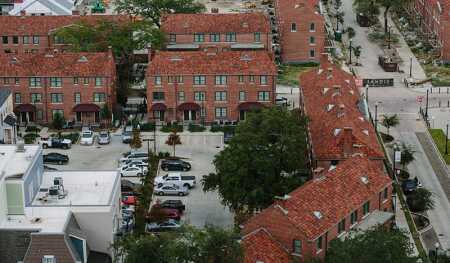Mixed-income development has long been seen as an important tactic to strengthen neighborhoods and improve prospects for low-income families, but more investors are warming up to the notion that affordable housing can also be a relatively low-risk venture that offers a stable rate of return.
“All of a sudden, hedge funds have woken up to the idea that affordable housing can be a really good, steady kind of investment,” Victoria S. Davis, president of Washington, D.C., development firm Urban Atlantic, said during a panel discussion at the ULI Housing Opportunity 2017 conference in New Orleans. “I think that investors are drawn very significantly to mixed-income housing.”
Panel moderator Adam Ducker, managing director and director of urban real estate for real estate advisory firm RCLCO, said his company has seen that institutional investors are now more receptive to backing mixed-income developments. “They may sort of scratch their head and worry, but it’s not the same roadblock it was even two or three years ago,” he said.
That doesn’t mean there are not lingering challenges in financing these types of projects, which many developers and housing advocates agree can generate broad and enduring positive impacts for communities.
Hal Ferris, principal of Spectrum Development Solutions, a Seattle-based company focused on mixed-use, transit-oriented, and environmentally sustainable development, said he has found that West Coast institutional investors are less receptive to mixing tax-credit projects with a private market-rate development. “Unfortunately, that has resulted in separate buildings and does not create the really mixed-income community we like,” he said.
As a result, the company’s financing model has evolved to attract investors with a long-term-hold philosophy, including a high-net-worth family not looking for a quick turnaround on their investments. Ferris said the company is also looking to partner with nonprofit organizations to craft creative financing solutions for developments that are open to renters with a range of incomes. “We would love to see the barriers break down further,” he said.
Other real estate firms, including Urban Atlantic, have demonstrated the financial viability of mixing market-rate with affordable housing in the same large-scale development. Davis said that her firm first became involved with mixed-income housing in 1995 through the now-expired HOPE VI program, which was aimed at eradicating severely distressed public housing. She said the federal program was an incubator of sorts that fostered innovation in the private sector and helped the company learn how to do mixed-income homeownership and rental housing. She said the company has since applied that knowledge to multiple mixed-income projects with considerable success.
“All of a sudden, hedge funds have woken up to the idea that affordable housing can be a really good, steady kind of investment.”—Victoria S. Davis
“It’s a niche business,” Davis said. “This is not for everybody because it’s actually really difficult to execute. But because it’s a niche business, it can be profitable.”
Urban Atlantic’s recent mixed-income ventures include a $120 million renovation and conversion of two abandoned former U.S. Environmental Protection Agency office buildings that were part of an urban redevelopment area, she said. The Sky House East and West projects, now rebranded under new names, were part of the mixed-use Waterfront Station project. They feature market-rate space at $3.25 a square foot ($34.97 per sq m), with 20 percent of the units set aside for renters making 50 percent of area median income.
Urban Atlantic is in the planning stages of an even more ambitious mixed-income project, the Parks at Walter Reed, which is a mixed-use, 66-acre (27 ha) redevelopment of the former Walter Reed Army Medical Center in Washington, D.C. The development team of Hines, Urban Atlantic, and Triden Development Group proposed 400 affordable units among the overall 2,000 units, a ratio that helped in the bid process.
“We won this as a public/private development, one, because we have the best partners in the world on our team and, two, because we offered more affordable housing here as part of our mix than any other team,” Davis said. “We worked the neighborhood to really get consensus around that.”
All the panelists stressed that while mixed-income development can be a profitable venture, the driving force for their companies is a strong social mission to offer suitable housing for a range of incomes, which, in turn, helps build more solid and inclusive neighborhoods. Jim Grauley, president and chief operating officer at Atlanta-based Columbia Residential, a real estate development and management firm that has built 5,000 affordable housing units across the South, said the company focuses on mixed-income work because it is both an interest of its partners and a proven success. “We seek out opportunities to do that and design our company to be able to execute that,” Grauley said. “We see the outcomes from it.”
Ferris said that his company was clear from the outset about its mission to give back to the community, which helped him recruit team members with similar philosophies. “When you let people know that’s what you care about, you attract people of like mind who want to do the same thing,” he said. “It’s a way to build an organization around culture and mission, even as a for-profit company.”






